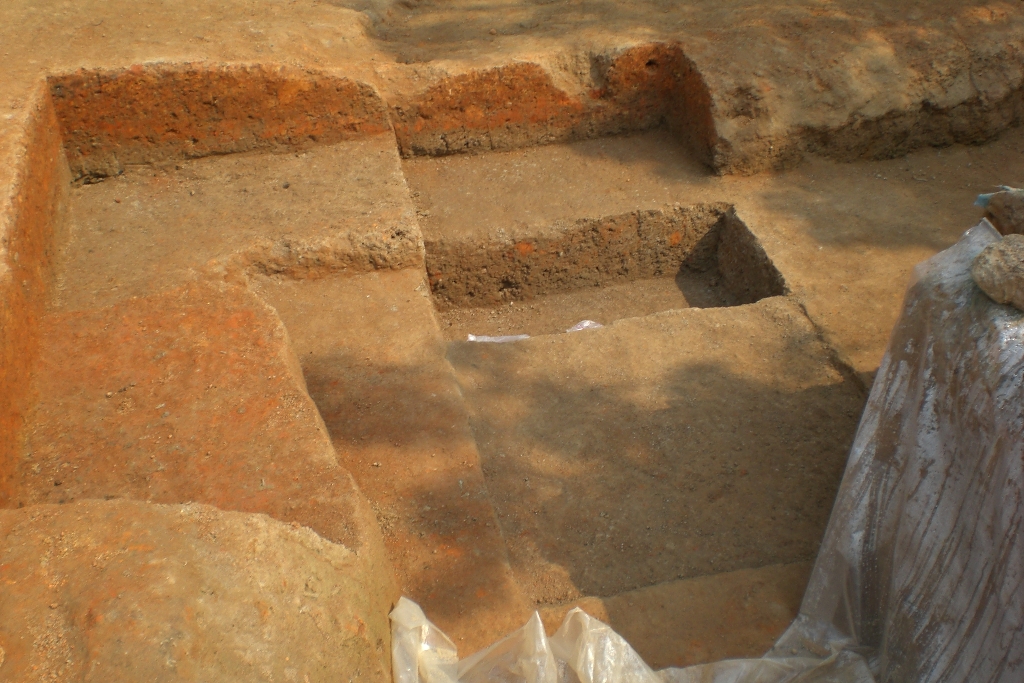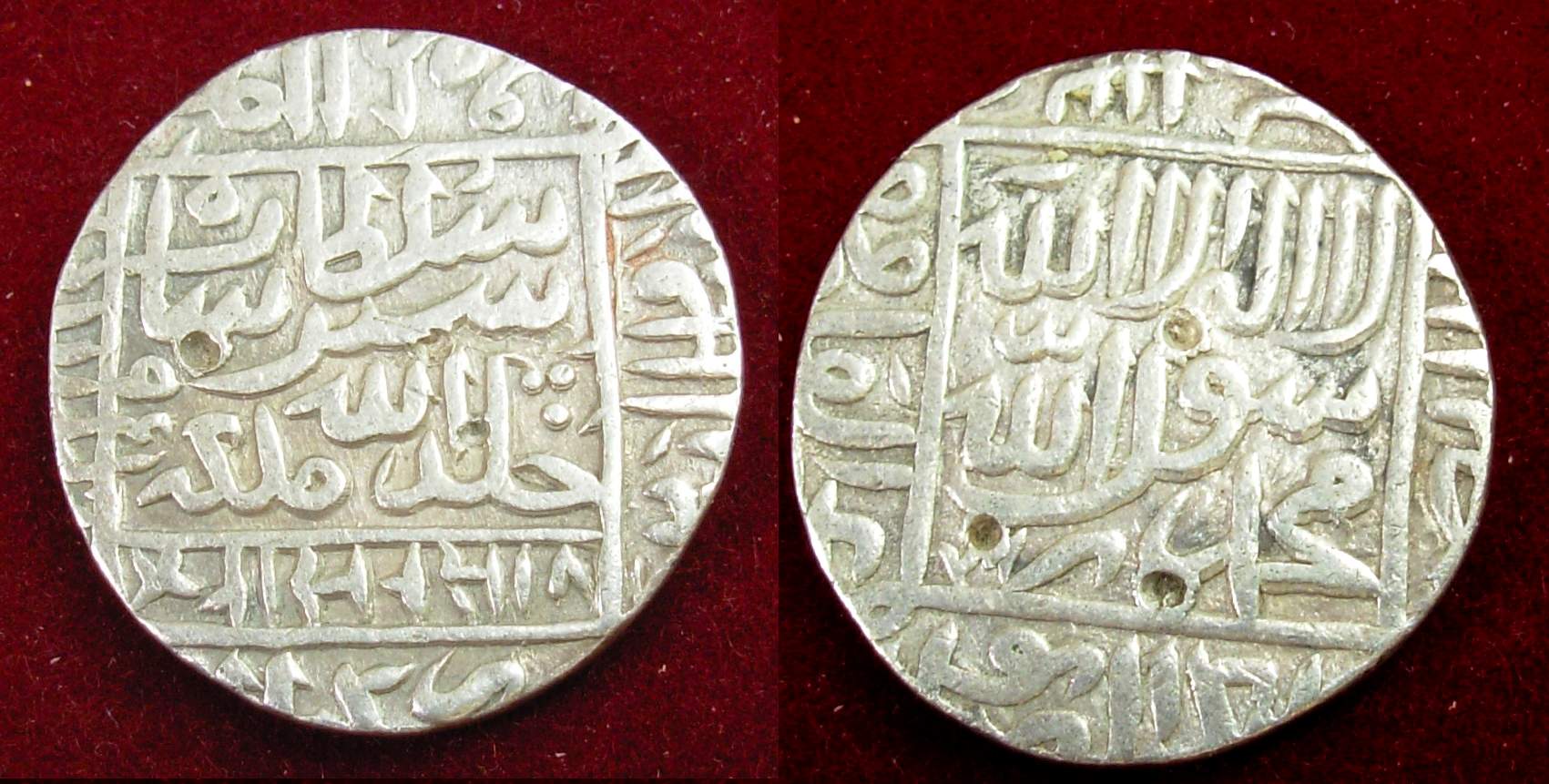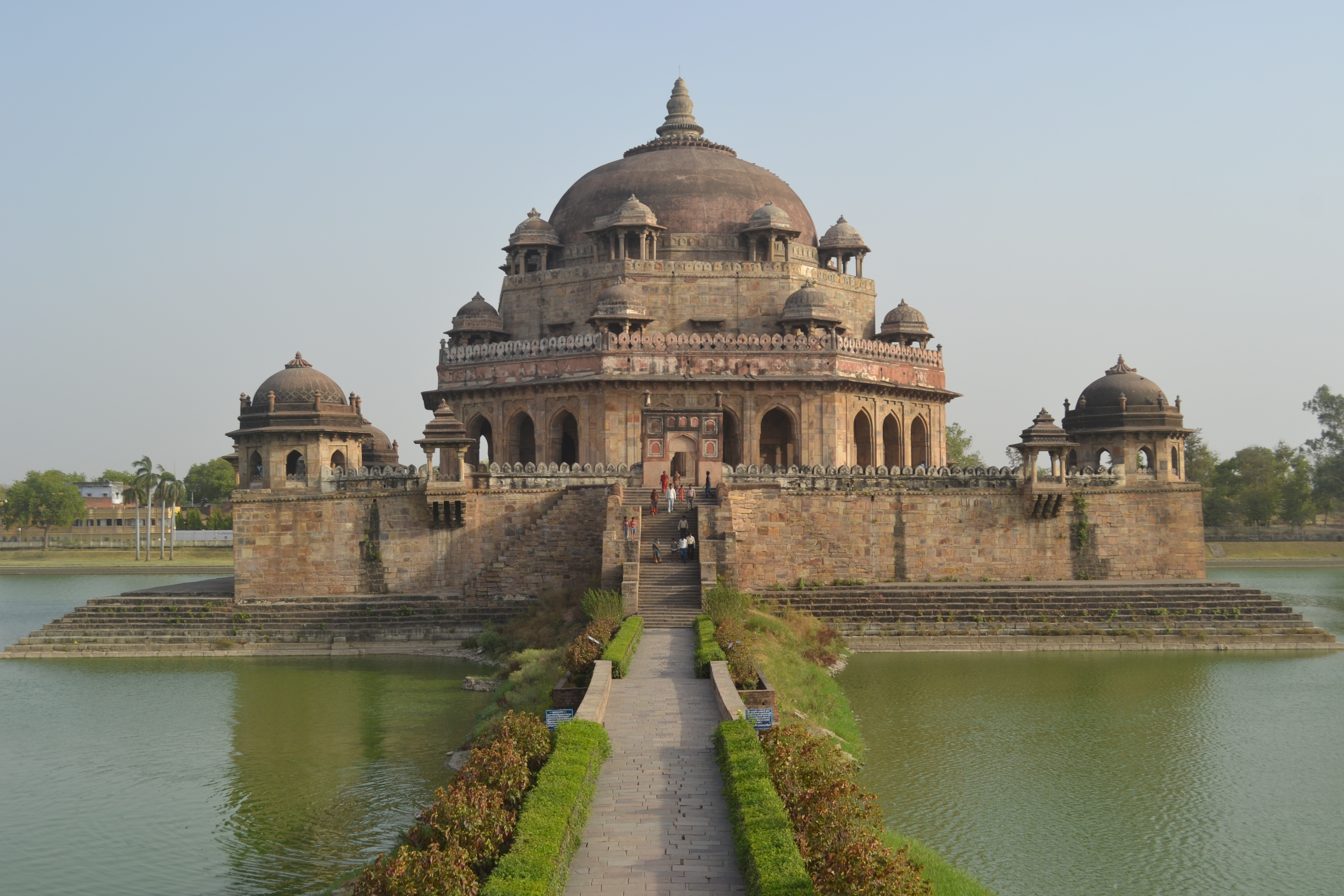|
Qazi Fazilat
Qazi Fazilat Shershahi ( bn, কাজী ফজিলত, fa, قاضی فضیلت) was an army qadi for Sher Shah Suri and later a governor of Bengal under the Sur Empire from 1541 to 1545. Biography The governor of Bengal, Khidr Khan, attempted to declare independence from the Sur Empire in 1541. However, his plan was unsuccessful and was dismissed from the office as governor by Emperor Sher Shah Suri. The Emperor then appointed Qazi Fazilat as the Amin of Bengal and superintendent of Rohtas Fort. Fazilat (meaning ''virtue'') was said to have been an easygoing and lighthearted man. Satirically, people would refer to him as Qazi Fazihat (meaning ''infamy'') and that became a very popular nickname of his. This name has passed on as a humorous expression used in the Eastern Bengali dialects. His term ended at the death of Sher Shah Suri. Fazilat was succeeded by Muhammad Khan Sur in 1545 who would also declare independence. See also * List of rulers of Bengal * ... [...More Info...] [...Related Items...] OR: [Wikipedia] [Google] [Baidu] |
Qadi
A qāḍī ( ar, قاضي, Qāḍī; otherwise transliterated as qazi, cadi, kadi, or kazi) is the magistrate or judge of a '' sharīʿa'' court, who also exercises extrajudicial functions such as mediation, guardianship over orphans and minors, and supervision and auditing of public works. History The term ''qāḍī'' was in use from the time of Muhammad during the early history of Islam, and remained the term used for judges throughout Islamic history and the period of the caliphates. While the '' muftī'' and '' fuqaha'' played the role in elucidation of the principles of Islamic jurisprudence (''Uṣūl al-Fiqh'') and the Islamic law (''sharīʿa''), the ''qāḍī'' remained the key person ensuring the establishment of justice on the basis of these very laws and rules. Thus, the ''qāḍī'' was chosen from amongst those who had mastered the sciences of jurisprudence and law. The Abbasid caliphs created the office of "chief ''qāḍī''" (''qāḍī al-quḍāh''), who ... [...More Info...] [...Related Items...] OR: [Wikipedia] [Google] [Baidu] |
Bengali Dialects
The dialects of the Bengali language are part of the Eastern Indo-Aryan language group of the Indo-European language family widely spoken in the Bengal region of South Asia. The spoken dialects of Bengali are mutually intelligible with neighbouring dialects. Bengali dialects can be thus classified along at least two dimensions: spoken vs. literary variations, and prestige vs. regional variations. Classifications Suniti Kumar Chatterji and Sukumar Sen classified Bengali dialects in five classes by their phonology and pronunciation. They are: NB Barendra refers to Varendri 1. Eastern Bangali dialect: Bangali dialect is the most widely spoken dialect of Bengali language. It is spoken across the Khulna, Barisal, Dhaka, Mymensingh, Sylhet and Comilla Divisions of Bangladesh and the State of Tripura in India. 2. Rarhi dialect: Rarhi dialect is spoken across much of Southern West Bengal, India. It is spoken by almost 20 percent of Bengali people. The regions where it is spoken in ... [...More Info...] [...Related Items...] OR: [Wikipedia] [Google] [Baidu] |
16th-century Indian Muslims
The 16th century begins with the Julian year 1501 ( MDI) and ends with either the Julian or the Gregorian year 1600 ( MDC) (depending on the reckoning used; the Gregorian calendar introduced a lapse of 10 days in October 1582). The 16th century is regarded by historians as the century which saw the rise of Western civilization and the Islamic gunpowder empires. The Renaissance in Italy and Europe saw the emergence of important artists, authors and scientists, and led to the foundation of important subjects which include accounting and political science. Copernicus proposed the heliocentric universe, which was met with strong resistance, and Tycho Brahe refuted the theory of celestial spheres through observational measurement of the 1572 appearance of a Milky Way supernova. These events directly challenged the long-held notion of an immutable universe supported by Ptolemy and Aristotle, and led to major revolutions in astronomy and science. Galileo Galilei became a champion o ... [...More Info...] [...Related Items...] OR: [Wikipedia] [Google] [Baidu] |
Governors Of Bengal
A governor is an administrative leader and head of a polity or political region, ranking under the head of state and in some cases, such as governors-general, as the head of state's official representative. Depending on the type of political region or polity, a ''governor'' may be either appointed or elected, and the governor's powers can vary significantly, depending on the public laws in place locally. The adjective pertaining to a governor is gubernatorial, from the Latin root ''gubernare''. Ancient empires Pre-Roman empires Though the legal and administrative framework of provinces, each administrated by a governor, was created by the Romans, the term ''governor'' has been a convenient term for historians to describe similar systems in antiquity. Indeed, many regions of the pre-Roman antiquity were ultimately replaced by Roman 'standardized' provincial governments after their conquest by Rome. Plato used the metaphor of turning the Ship of State with a rudder; the Latin w ... [...More Info...] [...Related Items...] OR: [Wikipedia] [Google] [Baidu] |
History Of India
According to consensus in modern genetics, anatomically modern humans first arrived on the Indian subcontinent from Africa between 73,000 and 55,000 years ago. Quote: "Y-Chromosome and Mt-DNA data support the colonization of South Asia by modern humans originating in Africa. ... Coalescence dates for most non-European populations average to between 73–55 ka." However, the earliest known human remains in South Asia date to 30,000 years ago. Settled life, which involves the transition from foraging to farming and pastoralism, began in South Asia around 7000 BCE. At the site of Mehrgarh presence can be documented of the domestication of wheat and barley, rapidly followed by that of goats, sheep, and cattle. By 4500 BCE, settled life had spread more widely, and began to gradually evolve into the Indus Valley civilisation, an early civilisation of the Old World, which was contemporaneous with Ancient Egypt and Mesopotamia. This civilisation flourished between 2500 BCE and 1900 ... [...More Info...] [...Related Items...] OR: [Wikipedia] [Google] [Baidu] |
History Of Bangladesh
Civilisational history of Bangladesh previously known as East Bengal, dates back over four millennia, to the Chalcolithic. The country's early documented history featured successions of Hindu and Buddhist kingdoms and empires, vying for regional dominance. Islam arrived during the 6th-7th century AD and became dominant gradually since the early 13th century with the conquests led by Bakhtiyar Khalji as well as activities of Sunni missionaries such as Shah Jalal in the region. Later, Muslim rulers initiated the preaching of Islam by building mosques. From the 14th century onward, it was ruled by the Bengal Sultanate, founded by king Shamsuddin Ilyas Shah, beginning a period of the country's economic prosperity and military dominance over the regional empires, which was referred by the Europeans as the richest country to trade with. Afterwards, the region came under the Mughal Empire, as its wealthiest province. Bengal Subah generated almost half of the empire's GDP and 12% of ... [...More Info...] [...Related Items...] OR: [Wikipedia] [Google] [Baidu] |
History Of Bengal
The history of Bengal is intertwined with the history of the broader Indian subcontinent and the surrounding regions of South Asia and Southeast Asia. It includes modern-day Bangladesh and the Indian states of West Bengal and Assam's Karimganj district, located in the eastern part of the Indian subcontinent, at the apex of the Bay of Bengal and dominated by the fertile Ganges delta. The region was known to the ancient Greeks and Romans as ''Gangaridai'', a powerful kingdom whose war elephant forces led the withdrawal of Alexander the Great from India. Some historians have identified Gangaridai with other parts of India. The Ganges and the Brahmaputra rivers act as a geographic marker of the region, but also connects the region to the broader Indian subcontinent. Bengal, at times, has played an important role in the history of the Indian subcontinent. The area's early history featured a succession of Indian empires, internal squabbling, and a tussle between Hinduism and Buddhi ... [...More Info...] [...Related Items...] OR: [Wikipedia] [Google] [Baidu] |
List Of Rulers Of Bengal
This is a list of rulers of Bengal. For much of its history, Bengal was split up into several independent kingdoms, completely unifying only several times. In ancient times, Bengal consisted of the kingdoms of Pundra, Suhma, Vanga, Samatata and Harikela. In the 4th century BCE, during the reign of the Nanda Empire, the powerful rulers of Gangaridai sent their forces with the war elephants which led the withdrawal of Alexander the Great from the Indian subcontinent. As a province of the Mauryan Empire, much of Bengal was part of it except for the far eastern Bengali kingdoms which maintained friendly relationships with Ashoka. The kingdoms of Bengal continued to exist as tributary states before succumbing to the Guptas. With the fall of the Gupta Empire, Bengal was united under a single local ruler, King Shashanka, for the first time. With the collapse of his kingdom, Bengal split up into petty kingdoms once more. With the rise of Gopala in 750 AD, Bengal was united once mor ... [...More Info...] [...Related Items...] OR: [Wikipedia] [Google] [Baidu] |
Bangali Dialect
Eastern Bengali or Vaṅga ( bn, বঙ্গ, bôṅgô)is a nonstandard dialect cluster of Bengali spoken in most of Bangladesh and Tripura, thus covering majority of the land of Bengal and surrounding areas. Names It is also known as Baṅgālī ( bn, বঙ্গালী, bôṅgalī), Pūrvavaṅgīẏa ( bn, পূর্ববঙ্গীয়, pūrbôbôṅgīẏô), Prācya ( bn, প্রাচ্য, prachyô), Vaṅga ( bn, বঙ্গ, bôṅgô), or Vaṅgīẏa ( bn, বঙ্গীয়, bôṅgīẏô). Chatterji often cited a more generalised variant of Eastern Bengali which he dubbed Typical East Bengali for the sake of broader comparison with other varieties of Bengali. Eastern Bengali is often colloquially referred to by the exonym Bangal Bhasha ( bn, বাঙাল ভাষা, bangal bhasha) in West Bengal due to its association with Bangals. It may also be referred to by names such as Khaisi-Gesi Bangla ( bn, খাইছি-গেছি বাং ... [...More Info...] [...Related Items...] OR: [Wikipedia] [Google] [Baidu] |
Sher Shah Suri
Sher Shah Suri ( ps, شیرشاه سوری) (1472, or 1486 – 22 May 1545), born Farīd Khān ( ps, فرید خان) , was the founder of the Sur Empire in India, with its capital in Sasaram in modern-day Bihar. He standardized the silver coin to the weight of 178 grams and named the currency as rupee based on the ancient Sanskrit term for silver. An ethnic Pashtun ruler, Sher Shah took control of the Mughal Empire in 1540 CE. After his accidental death in 1545 CE, his son Islam Shah became his successor. He first served as a private before rising to become a commander in the Mughal army under Babur and then the governor of Bihar. In 1537, when Babur's son Humayun was elsewhere on an expedition, Sher Shah overran the state of Bengal and established the Suri dynasty. A brilliant strategist, Sher Shah proved himself as a gifted administrator as well as a capable general. His reorganization of the empire laid the foundations for the later Mughal emperors, notably Akbar, son of Hu ... [...More Info...] [...Related Items...] OR: [Wikipedia] [Google] [Baidu] |
Rohtas Fort, India
The Rohtasgarh or Rohtas Fort is located in the Son River valley, in the small town of Rohtas in Bihar, India. Location Rohtasgarh is situated on the upper course of the river Son, 24° 57′ N, 84° 2′E. It takes around two hours from Sasaram to reach the foot of the hill over which is the Rohtas fort. It can be reached easily from the Dehri town, which has very good road network. One can also easily reach Rohtas fort via Akbarpur. The fort is situated at about 1500 feet above sea level. The 2000 odd limestone steps were probably meant for elephants. For the visitor, they are exhausting climb of an hour and a half. At the end of the climb, one reaches the boundary wall of the fort. A dilapidated gate with a cupola can be seen there, which is the first of many gates provided for well-guarded entrances to the fort. From here one has to walk another mile or so before the ruins of Rohtas can be seen. History The early history of Rohtas is obscure. According to the local legend ... [...More Info...] [...Related Items...] OR: [Wikipedia] [Google] [Baidu] |
Sur Empire
The Sur Empire ( ps, د سرو امپراتورۍ, dë sru amparāturəi; fa, امپراطوری سور, emperâturi sur) was an Afghan dynasty which ruled a large territory in the northern part of the Indian subcontinent for nearly 16 years, between 1540 and 1556, with Sasaram, in modern-day Bihar, serving as its capital. The Sur dynasty held control of nearly all the Mughal territories, from eastern Balochistan, Pakistan in the west to modern-day Rakhine, Myanmar in the east. History Sher Shah, an ethnic Pashtun of the tribal house of Sur, first served as a private before rising to become a commander in the Mughal army under Babur and then the governor of Bihar. In 1537, when Babur's son Humayun was elsewhere on an expedition, Sher Shah overran the state of Bengal and established the Suri dynasty. The Sur supplanted the Mughal dynasty as rulers of North India during the reign of the relatively ineffectual second Mughal Humayun. Sher Shah defeated ''badshah-i-Hind'' ... [...More Info...] [...Related Items...] OR: [Wikipedia] [Google] [Baidu] |


.png)

.png)


